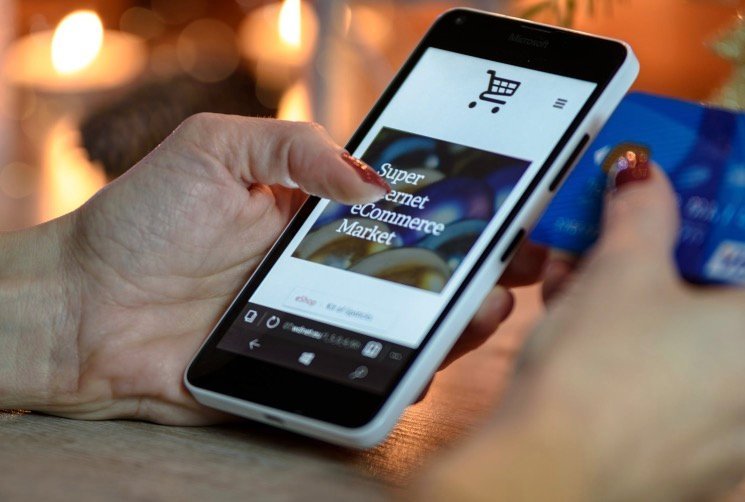With online shopping growing every year, the competition for ecommerce stores is fierce. While strategies like SEO and PPC are great for finding customers actively searching for products, social media offers a unique way to connect with them in their favorite online spaces. It allows you to build a brand, foster community, and create a direct, two-way conversation with people interested in what you sell. This guide will help you choose the best platforms for your business.
Why Social Media is a Must-Have for Ecommerce Stores
In a world where most adults are active on social media, ignoring these platforms means missing out on a massive audience. Search engines are fantastic for capturing demand, but social media helps you create it.
Think of it as setting up a stall in a busy marketplace versus waiting for someone to knock on your door. Social media marketing puts your brand directly in front of potential customers while they are relaxing and scrolling. This less formal environment makes it easier to build genuine relationships and brand loyalty.
The best part is that getting started is simple and often free. Creating a business account on major platforms costs nothing, giving you a powerful tool to grow your brand and drive quality traffic to your online store without a huge initial investment.
Facebook: The Giant for Reaching Almost Everyone
With over 1.5 billion active users, Facebook is the largest social network on the planet. This makes it an essential starting point for nearly any ecommerce retailer because your target audience is almost certainly using it.
The first step is to create a dedicated business page for your store. This acts as a central hub for your brand on the platform.
From there, you can start building a community. Share high-quality pictures of your products, announce special offers and discounts, and post links to your blog or new arrivals. The goal is to provide value and create content that encourages likes, comments, and shares, which expands your reach.
Facebook’s powerful advertising tools also allow you to target very specific demographics, interests, and behaviors, ensuring your marketing budget is spent on reaching the most likely buyers.
Instagram: A Visual Showcase for Your Products
Instagram is all about visuals, making it a perfect match for ecommerce businesses with appealing products. If you sell clothing, home decor, food, or anything else that looks great in a photo, Instagram should be a top priority.
Your strategy here is to tell a story through beautiful images and engaging videos. Don’t just post product shots on a white background. Show your products in use, create fun “behind-the-scenes” content using Instagram Stories, and build a cohesive, attractive feed that represents your brand’s personality.
Using relevant hashtags is crucial for discoverability, helping users who don’t follow you yet find your products. Collaborating with influencers can also be a highly effective way to get your products in front of a larger, trusting audience.
Twitter: for Real-Time Conversations and Customer Service
Twitter is a fast-paced platform ideal for sharing timely updates and engaging in direct conversations. Many customers have made purchases after first seeing a product on Twitter, proving its power for ecommerce.
It’s an excellent place to build a brand voice and show your customers that you are accessible and responsive. Many users turn to Twitter to ask brands questions or share feedback.
To succeed on Twitter, you should consistently share useful content.
- Post links to new products and blog articles.
- Announce flash sales and limited-time offers.
- Run polls to get customer feedback on potential new products.
Being available to answer questions quickly and professionally can significantly improve your brand’s reputation. This direct interaction fosters a healthy relationship between you and your customers, turning them into loyal followers.
How to Choose the Best Platform for Your Brand
You don’t need to be on every single platform. The key is to focus your efforts where your target customers spend their time. A brand selling retirement planning services will have little success on Snapchat, while a trendy streetwear brand might find it to be their most important channel.
Consider your product and your ideal customer. Are your products highly visual? Instagram and Pinterest are great choices. Is your audience younger? Look into Snapchat and TikTok. Do you want to build a community and run targeted ads? Facebook is unbeatable.
The table below provides a quick comparison to help you decide where to start.
| Platform | Primary Audience | Best for Ecommerce Strategy |
|---|---|---|
| Broad (All Ages) | Building community, targeted advertising, driving traffic. | |
| Gen Z & Millennials | Brand storytelling, influencer marketing, visual product discovery. | |
| Broad (Slightly Male-skewed) | Customer service, real-time updates, public relations. | |
| Snapchat | Gen Z | Behind-the-scenes content, user-generated content, reaching a younger audience. |
Snapchat: Tapping into the Younger Audience
If your target market consists of teenagers and young adults, Snapchat is a platform you can’t afford to ignore. It offers a unique way to connect with a younger demographic in a fun and authentic format.
This platform is all about short, temporary content like photos and videos that disappear after being viewed. This creates a sense of urgency and makes followers feel like they are part of an exclusive club. Use it to share behind-the-scenes looks at your business, run quick promotions, or partner with influencers popular among a younger crowd.
Since content is fleeting, it’s important to be active and consistently post interesting updates to keep your followers engaged. Also, make sure to cross-promote your other social media profiles so your Snapchat followers can easily find you on other platforms.
Frequently Asked Questions about Social Media for Ecommerce
Do I need to be on every social media platform?
No, it’s better to do an excellent job on one or two platforms where your target audience is most active than to spread yourself too thin across many. Quality over quantity is key.
How much does it cost to start social media marketing?
Creating business accounts on platforms like Facebook, Instagram, and Twitter is completely free. Paid advertising is optional but can be a very effective way to accelerate your growth.
What kind of content should I post for my ecommerce store?
A good strategy includes a mix of content. Post high-quality product photos, share content from your customers (user-generated content), run promotions, and show the human side of your brand with behind-the-scenes posts.
How can I find my target audience on social media?
Start by analyzing your current customer base. Look at their demographics and interests. Most social media platforms also have built-in analytics tools that provide valuable insights into your followers.
How often should I post on social media?
This depends on the platform. On fast-paced sites like Twitter, you might post several times a day. On Instagram or Facebook, a few times a week might be enough. The most important thing is to be consistent.









Leave a Comment